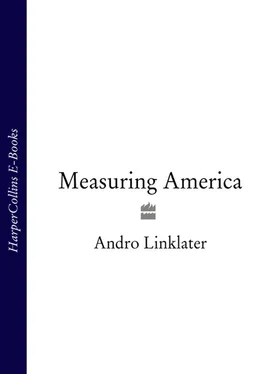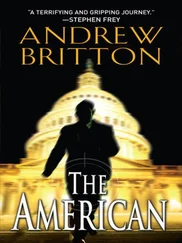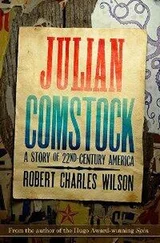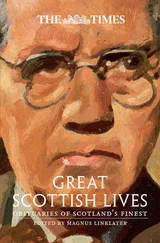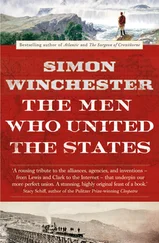The greatest real-estate sale in England’s history occurred after Henry VIII dissolved a total of almost four hundred monasteries which had been acquiring land for centuries. He justified his action on the grounds that these houses of prayer had grown depraved and corrupt, but tales of drunken monks and lecherous nuns served to conceal a more mundane purpose – Henry needed money. On the monasteries’ dissolution, all their land, including some of the best soil in England, automatically reverted to their feudal overlord, the king. These rich acres were then sold to wealthy merchants and nobles in order to pay for England’s defences.
The sale of so much land for cash was a watershed. Although changes were already underway, with feudal services often commuted for rents paid in coin, and feudal estates frequently mortgaged and sold, up to that point the fundamental value of land remained in the number of people it supported. From now on the balance would shift increasingly to a new way of thinking. Prominent among the purchasers of Church property were land-hungry owners, like the Duke of Northumberland, who had been enclosing common pastures, but far more common were the small landlords who had done well from the rise in the market value of wool and corn, and who now chose to invest in monastery estates. In Norfolk, Sir Robert Southwell attracted attention because of the mighty pastures he carved out from common land for his fourteen flocks of sheep, each numbering around a thousand animals, but the Winthrop family who acquired and enclosed monastery land in the same county almost escaped notice.
They and their surveyors knew that the monasteries’ widely separated rigs and shares of common land would become more valuable once they were consolidated into fields. It was what later generations would term an investment opportunity. The old abbots and priors had understood land ownership to be part of a feudal exchange of rights for services. The new owners knew that it depended on money changing hands, and that to maximise profits the old ways had to be replaced.
‘Jesu, sir, in the name of God what mean you thus extremely to handle us poor people?’ a widow demanded of John Palmer, an enclosing landlord in Sussex who in the 1540s bought the monastic estate on which she lived, and evicted her from her cottage.
‘Do ye not know that the King’s grace hath put down all the houses of monks, friars and nuns?’ Palmer retorted. ‘Therefore now is the time come that we gentlemen will pull down the houses of such poor knaves as ye be.’
As enclosures and rising rents forced thousands of villeins and farm-labourers away from the manors that once supported them, protests kept the printing presses busy. Some represented the propaganda of conservative voices like Sir Thomas More, who memorably wrote of pastoralists like Southwell, ‘Your sheep that were wont to be so meek and tame, and so small eaters, now as I hear say, be become so great devourers and so wild, that they eat up and swallow down the very men themselves.’ Resentment also triggered popular uprisings in the north, east and west of England, and the government itself introduced Bills in Parliament against enclosure, though by the second half of the sixteenth century few were passed.
Recent research downplays the actual number of enclosures, but no one questions the enormous redistribution of land that occurred. Even G.R. Elton, the most sceptical of Tudor historians, accepted that it ‘laid the foundation for that characteristic structure of landlord, leasehold farmer, and landless labourer which has marked the English countryside from that day to this’.
The hidden hand in this gigantic upheaval was provided by the survey and plat that recorded the new owner’s estate as his property. The emphasis in Benese’s book on exact measurement reflected the change in outlook. Once land was exchanged for cash, its ability to support people became less important than how much rent it could produce, and that depended largely on the size of the property. The units used to measure this could no longer vary; the method of surveying had to be reliable. The surveyor ceased to be a servant, and became an agent of change from a system grounded in medieval practice to one which generated money.
Some at least became uneasily aware of what they were doing. In the Surveior’s Dialogue , John Norden specifically blamed the act of measuring itself for helping to destroy the old ways, and held surveyors responsible as ‘the cause that men [lose] their Land: and sometimes they are abridged of such liberties as they have long used in Mannors: and customes are altered, broken, and sometimes perverted or taken away by your means’.
What the new class of landowners required of their surveyors above all was exactness, and the sudden increase in the number of manuals the last quarter of the sixteenth century testified to the urgency of their need. Before that, in 1551, Robert Recorde wrote a book called Pathway to Knowledge in praise of the accuracy that geometry offered surveyors, but warning of its potential for destruction:
Survayers have cause to make muche of me.
And so have all Lordes that landes do possesse:
But Tennauntes I feare will like me the lesse.
Yet do I not wrong, but measure all truely,
And yelde the full right to everye man justely.
Proportion Geometricall hath no man opprest,
Yf anye bee wronged, I wishe it redrest.
It was against this background – an urgent and growing need for the accurate measurement of land – that Edmund Gunter devised his chain. Born in 1581 to a Welsh family, Gunter had been sent to Oxford University to be educated as a Church of England priest, but by the time he was ordained he had discovered that numbers were more inspiring to him than religion. In twelve years as a divinity student he preached just one sermon, and its reputation endured long after his death because, according to Oxford gossip, ‘it was such a lamentable one’. What really interested him was the relationship of mathematics to the real world, and consequently he spent most of his time making instruments to illustrate the way in which numbers worked.
Ratios and proportions were his passion. He invented an early slide-rule, known as Gunter’s scale, to demonstrate proportional connections between numbers, and worked out to seven places of decimals the logarithms for sine and cosine. The point at which this enthusiasm for numerical ratios touched upon concrete reality was trigonometry, which allowed mathematicians to calculate the length of two sides of a triangle, when only the third side and two angles were known; it also, as we have seen, enabled surveyors to work out the distance between two objects without having to walk between them.
Since only the most basic instruments existed at that time, mathematicians and astronomers were expected to design their own. To demonstrate the solutions to problems in geometry, Gunter was constantly adapting and improving nautical instruments like the quadrant and cross-staff, which measured vertical angles between the sun and the horizon, or horizontal angles between towers, trees and churches. Indeed his enthusiasm for new gadgets cost him the best scientific job in the land. In 1620 the wealthy but earnest Sir Henry Savile put up money to fund Oxford University’s first two science faculties, the chairs of Astronomy and Geometry. Gunter applied to become Professor of Geometry, but Savile was famous for distrusting clever people – ‘Give me the plodding student,’ he insisted drearily – and the candidate’s behaviour annoyed him intensely. As was his habit, Gunter arrived with his sector and quadrant, and began demonstrating how they could be used to calculate the position of stars or the distance of churches, until Savile could stand it no longer. ‘Doe you call this reading of Geometrie?’ he burst out. ‘This is mere showing of tricks, man!’, and according to a contemporary account, ‘dismisst him with scorne’.
Читать дальше
